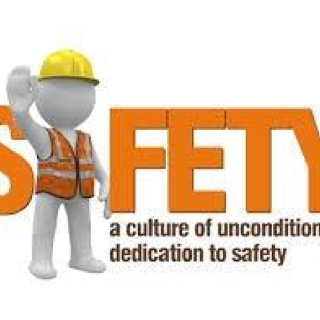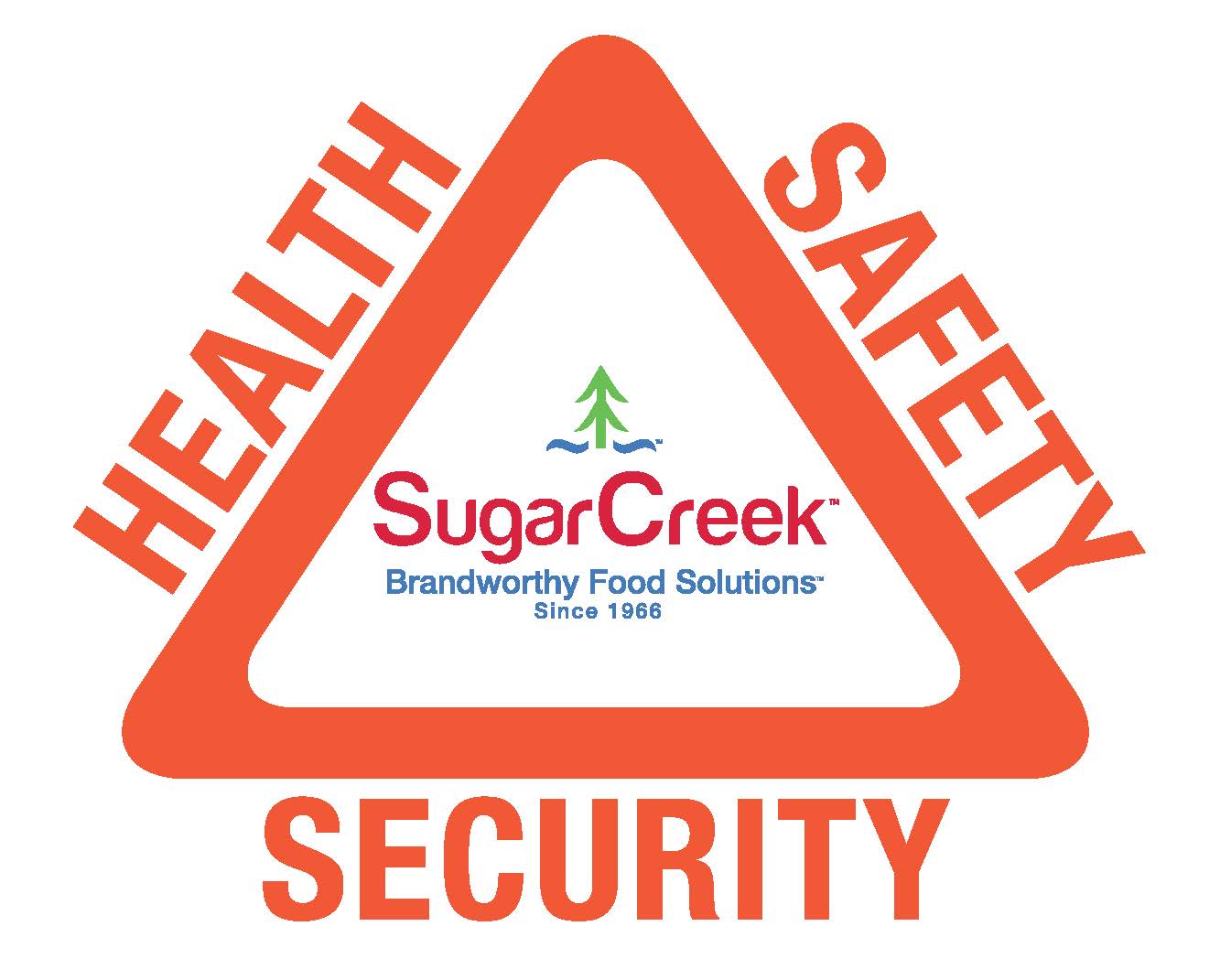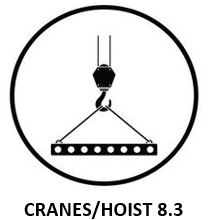Information
-
Audit Title
-
Site Name
-
Conducted on
-
Auditor
-
Location
-
Site EHS Manager
-
This Annual Program Review covers the Confined Space program only. The overall Permit to Work process and Non-Routine Activities is covered in a separate Annual Program Review.
Applicable Standards
-
Select those standards that apply.
- EHS&S Standard 24, Control of Permit Required Work and Non Routine Activities
- CFR 29 1910.146 Permit Required Confined Spaces
Documents Reviewed
-
Written Program - Confined Space Procedure
-
Medical Surveillance
-
Training Program
-
Training Records
-
Accident or Near Miss Investigations
-
Completed Confined Space Permits
-
Site Confined Space Inventory
-
Prior Year Annual Program Review
-
Site specific documents (list any site specific documents reviewed as part of APR)
Annual Program Reivew
-
Were annual program reviews completed in each of the last three calendar years? (verify people involved in annual evaluation (maintenance, production, EHS, Training, etc)
-
Was an annual program review completed and documented in the prior calendar year?
-
Were actions from the prior years annual program review tracked?
-
Were actions from the prior years annual program review completed?
Program Execution
-
Is there an IOSS program leader on site?
-
Has the organization established, implemented, and maintained a process to conduct and document a facility-wide survey by a qualified person at least every two years to identify and inventory all confined spaces?
-
After the survey is completed, has the organization determined whether any of the confined spaces shall be classified as a Permit Required Confined Space (PRCS)?
-
What is the date on the most current confined space inventory?
-
Are all new equipment and installations evaluated as to whether they contain a Permit Required Confined Space and, if so, are the potential hazards of the PRCS formally evaluated and is the new equipment/PRCS added to the current documented PRCS inventory before use?
-
Verify site procedure contains this requirement.
Written Program - Confined Space Procedure
-
Verify procedure and work instructions. Verify information on temporary confined space arrangements.
-
Has the organization established, implemented, and maintained a written Confined Space Entry Program (CSEP) that details the requirements, including the following, for protecting employees from the hazards of entering Permit Required Confined Spaces (PRCS)? <br>- Document specific assignments of responsibility; and,<br>- If a non-J&J employee (contractor) performs a task that involves a PRCS entry, inform the contractor that a permit is required prior to entry, why the space is a PRCS, the PRCS hazard, and procedures that have been implemented to protect all employees?
Training
-
Verify training matrix, content of each specific training, training records.
-
What is the frequency of training?
- Initial
- Annual
- Every 3 Years
- Initial Only
-
Is there a mechanism to ensure training is provided to all site personnel assigned PRCS responsibilities relative to the functional role including initial training before employees perform PRCS duties?
-
Does the training program cover the required program elements?
-
Is there "hands-on" training for entrants and on-site rescue personnel?
-
Provide any other notes on the training program.
Medical Evaluation
-
Is the list of participants in the medical surveillance program for Physical Hazards aligned with the list of employees who perform confined space entry or rescue?
-
What is the system for identifying and notifying those who are required to be in the medical surveillance program?
Confined Space Permit
-
Note: A verification and quality check of 10 confined space permits from different departments should be completed. Verification should include the following:
Verify content form:
- sign off all persons involved
- identification hazard
- identification safety precautions
- monitoring results: explosion, oxygen level and toxicity + identification frequency sampling -
How many confined space permits have been completed in the past 12 months?
-
Is the site using the J&J standardized Confined Space permit?
-
Does the site confined space permit provide for a permit document or form (either paper, electronic or a combination of both) that includes all the following:<br>- provides the date the permit is issued and the time for which is is valid;<br>- identifies the plant of department/area/equipment/installation for which the permit is valid;<br>- Cross-reference other permits that may interact of affect one another;<br>- Clearly identifies and documents the scope, nature and extent of the job at hand and the hazards involved;<br>- Clearly identifies the measures necessary to control the identified hazards;<br>- Identifies the person(s) approving the proposed safety control measures.<br>As a minimum this shall be:<br>= The J&J responsible person, or a formally authorized contractor who represents J&J, issuing the permit; and;<br>= The person or his authorized replacement in charge of the plant or in charge of the department/area/equipment/installation where the work is undertaken.<br>- Identifies the people accepting the job at hand and the proposed safety control measures;<br>- Depending on the scope, scale and complexity of the described job at hand, the permit form provides for the identification of the person granting permission to start the work described on the permit form.<br>- Identifies the person(s) agreeing that the work is completed and the department/area/equipment/installation on which the permit required work was completed is left in a safe condition.<br>At a minimum this shall be:<br>= The person or authorized replacement in charge of the plant or in charge of the department/area/equipment/installation where the work is undertaken; and;<br>= The person representing the crew that completed the job at hand?
-
Is there a Confined Space permit authorization matrix for the site? (A listing of who can approve CS permits)
-
Is the Permit Authorization Matrix current? (meaning the names on the matrix are all still in place)
-
Does the IOSS Program Leader, EHS or Facilities, review and provide feedback on confined space permits in some manner?
Confined Space Monitoring
-
Is the PRCS atmosphere systematically evaluated for the all identified hazards prior to entry (flammable gases/explosion, Oxygen levels, toxic gases/vapors)? (Verify procedures and field verify work permits)
-
Is atmospheric testing of the PRCS done without entry, and with suitable equipment such as a pump and test probe connected to the monitoring devices such that oxygen, toxic and flammable vapors of the PRCs can be evaluated?
-
Is the tester trained to monitor the atmosphere in the PRCS at different heights (10%-50%-75%)?
-
Does the entrant systematically use a personal monitor (related to applicable hazard)?
-
Does all the monitoring equipment have a display to read the monitoring results? Do they have visible and audible alarms?<br>Verify the monitoring equipment and check the alarm settings:<br>- oxygen: 19.5 - 23.5 %<br>- LEL: A1 = 10% LEL; A2 = 30% LEL (verfiy as well selected calibration gas)<br>- toxicity: A1 = 10% TLV; A2 = 100% TLV<br>Verify the monitoring equipment if it is possible to reset the equipment in alarm mode and perform fresh air calibration (=should NOT be possible!)
-
Is the frequency of monitoring the atmosphere inside the PRCS identified and recorded on the work permit (prior to and during entry)? Is the time of the monitoring noted on the Work Permit?
-
Does the tester always verify alarm settings, calibration date, bump testing, visible and audible alarms before using the gas detector in an area where there is no exposure to chemicals? Is the pre-use testing documented?
-
Is the monitoring equipment periodically calibrated by the supplier or qualified individual according to the manufacturers guidelines? (at least every 6 months)?
-
Are bump tests performed and documented on the equipment before each use (or at least daily)?
-
What monitoring devices are used to check toxicity in the PRCS (colorimetric tubes, electrochemical cells, PID, FID, IR, …)? Are work instructions available how to use this equipment? Is there evidence of training of the gas testers?
-
Are people using the equipment properly trained by the supplier or qualified individual according to the manufacturers guideline?<br>Verify training packages.<br>Verify training records<br>Verify involved persons by asking a few basic questions during field verification.
Confined Space Rescue
-
Verification rescue tools and periodic inspections.
Verification procedure to sign off Rescue team work permit before entry (inspection CS, presence rescue tools, presence rescue plan).
Verification communication (tools) with back up ERT and intervention time
(< 3 minutes).
Verify qualifications ERT: rescue techniques and first aid and CPR.
If relying on an outside rescue team: verify capability, intervention time, how made available? -
Has the organization established, implemented, and maintained a formal rescue plan for each PRCS entry that includes, at a minimum, the ability to retrieve the entrant(s) in an emergency without requiring any additional personnel to enter the space?
-
To facilitate non-entry rescue, are retrieval systems or similar methods used whenever an authorized entrant enters a PRCS, unless the retrieval equipment increases the overall risk of entry or does not aid in the entrant's rescue?
-
If retrieval of entrant(s) during an emergency requires entry of additional personnel into the space, is a rescue team readily available to perform the rescue?
-
Is there an on-site confined space rescue team?
-
When the primary rescue capability is provided by on-site personnel, does the organization ensure the following:<br>- Each rescue team member is provided with, and trained to properly use, the personal protective and rescue equipment necessary for safely making rescues from PRCS's;<br>- The rescue and retrieval equipment are regularly inspected to ensure its adequacy and reliability;<br>- Each rescue team member is trained to perform the assigned rescue duties and receive the same training as authorized entrants;<br>- Each rescue team member practices PRCS rescues at least annually using appropriate equipment and dead weight manikins to simulate actual facility environments: and,<br>- At least one (a) rescue team member holds current certification in fist aid and cardiopulmonary resuscitation (CPR)?
-
When the primary rescue capability is provided b outside rescue services, does the organization ensure that the outside rescue services:<br>- Partner in developing response plans and practice rescue operations on site;<br>- Are informed of the hazards of the particular PRCS from which they may perform a rescue;<br>- Are given access to all PRCS from which rescue may be necessary so they can develop appropriate rescue plans and practice rescue operations; and;<br>- Are contacted prior to each entry to determine whether they should be on-site during the planned entry?
Employee Discussions
-
Discussions were held with the following groups or employees on site. List number of people when applicable.
Plant Tour
-
Is there a central location(s) with blank permits?
-
Is there a central location for completed permits to be returned?
-
Were there any confined space entries observed during the site tour?
-
Were all requirements of the confined space permit properly completed and being executed?
-
Did entrants, entry supervisors and rescue team members understand their respective roles for the entry?
-
Had the permit been reviewed with those completing the task?
-
Any comments on the observed confined space entry?
-
Are the locations of all PRCSs formally documented, appropriately communicated, and identified by signage that clearly states DANGER – PERMIT REQUIRED CONFINED SPACE?










